|
I'm trimming the fat this week. Whittling down every professional, household, parenting, and writing item on my list down to the bare minimum. The act itself is liberating, the results are life-changing, and the fallout is gut-wrenching.
My son asked last night what "Gaza means and what does it have to do with Russia and Ukraine." I turned off NPR and turned to face him. I wrote a master's thesis on this exact topic, but his frontal lobe will not allow for that depth of explanation. "The governments of Russia, Gaza, and Gaza's neighbor Israel all want more land to themselves. They don't want to let the people who live there to be there anymore." "So the governments are bullies?" he asked. "Yes." That's exactly it. And we moved on to talking about dragon wings. Earlier in the day I was in a meeting with my son's teachers and a group of parent volunteers. Things aren't going well in the classroom due to a variety of reasons, many kids are having hardcore meltdowns, grades are down, teachers are down. So we asked them what they needed. Turns out they needed us to listen, to hold space while they wept with physical pain and frustration. They needed help. So we organized, sent out SignUpGenius schedules and Amazon wishlists--the bakesales of the post-pandemic academic scene. Instead of yelling about what our kids needs are aren't getting, we listened. I'm not writing this to pay myself on the back. I'm really wondering what it would be like if we listened to each other instead of yelling. Not sure how that would play out in the political theaters, maybe egos are too over-developed to make much of a difference, but at least existence for those of us not living in the middle of violent conflicts would have more capacity to keep calm and hold space for those who are hurting. Maybe. At least it would whittle down the worldwide roar of anger that seems to permeate every space humans occupy. It's louder than the freeway outside my window as I write this. There's got to be a better way.
0 Comments
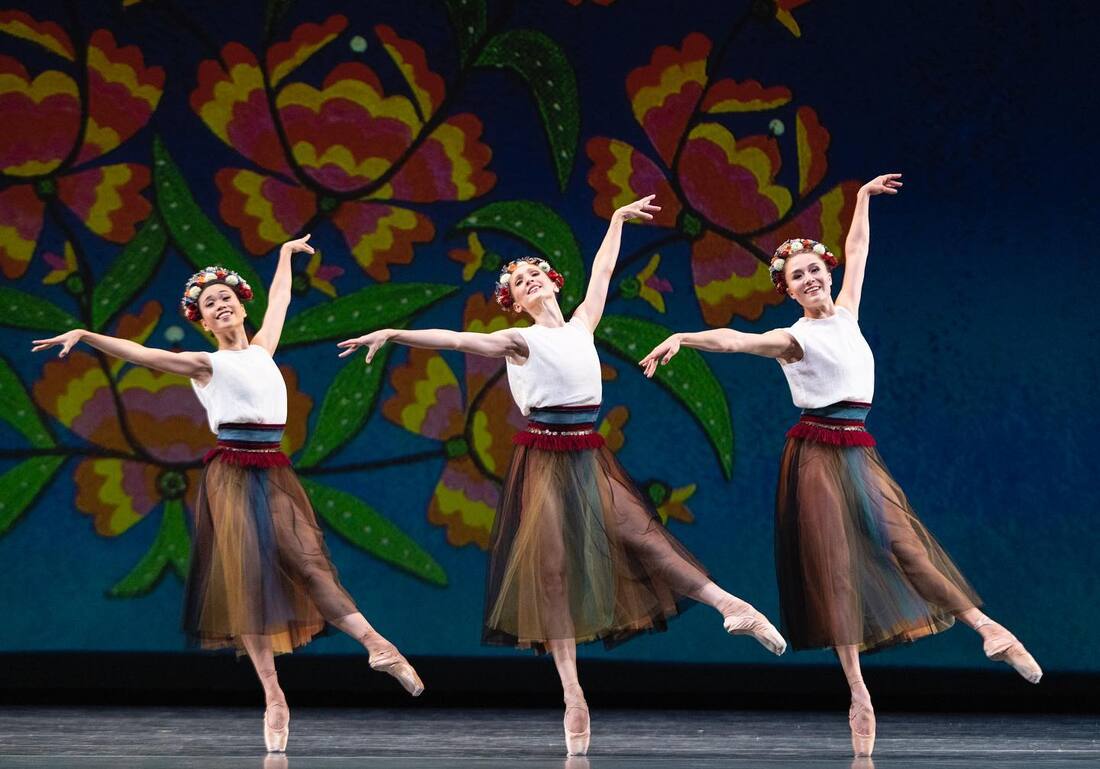 Photo by Angela Sterling. Prinicipal dancers Angelica Generosa, Liz Murphy, Cecelia Iliesiu. Photo by Angela Sterling. Prinicipal dancers Angelica Generosa, Liz Murphy, Cecelia Iliesiu. (An unedited version of my recent Seattle Times story, because I felt like a lot of good schtuff got cut) Click here for the published piece and read on for the whole enchilada... Pacific Northwest Ballet Celebrates 50 Years Onstage Half a century ago, a small resident dance company called the Pacific Northwest Dance Association formed under the umbrella of Seattle Opera and marked a turning point in Seattle’s live theater scene. By the end of 1978, the company now known as Pacific Northwest Ballet was under the leadership of former New York City Ballet stars Francia Russell and Kent Stowell. On September 23rd of this year, Pacific Northwest Ballet will celebrate its 50th anniversary season. Pacific Northwest Ballet continues to evolve into a larger and more diverse institution. With a performing company of forty dancers, a school for children and pre-professionals, and several programs for community and professional development, PNB is moving forward into the post-pandemic era with a new approach to leadership. Beginning with the 50th anniversary season, former principal dancer Kiyon Ross will bring 22 years of experience at PNB to his new position as associate artistic director. “I feel like I’ve had the longest apprenticeship to become the associate artistic director!” says Ross. Ross’s Pacific Northwest Ballet career began at the PNB School in 2000, quickly followed by a company contract in 2001. He obtained a BA in nonprofit leadership from Seattle University through PNB’s “Second Stage,” the dancer and donor-funded program allowing artists to earn a college degree during their performing careers. After his 2015 retirement from the stage, Ross became a faculty member at the school and manager of PNB’s pre-professional program Next Step. In his new role, Ross will assist artistic director Peter Boal with the artistic management of the company, rehearsals, and communicating with the numerous departments under the PNB roof. The magnitude of the new role, especially in the wake of the global pandemic and Black Lives Matter-era discussions for increased diversity in the arts, does not dull Ross’s joy with his new leadership position but pushes him toward a greater purpose. “There is space for a collective feeling of joy in all of this work,” he says. “We can move through all of this together. Art is meant to pull us out of our day-to-day [lives] and give us an experience of something transcendent–especially after what we have just experienced as a society.” Ross is referring to the 2020 pandemic lockdown, which abruptly shut the doors of theaters around the world. Many did not reopen. With a staff of 350 full time employees and 200 part-time staff members, Boal and PNB executive director Ellen Walker suddenly had the well-being of an entire organization at their feet. Additionally, the resulting social upheaval around economic inequality and the Black Lives Matter Movement pushed Pacific Northwest Ballet to face inequities within its own ranks. As Pacific Northwest Ballet reopened in 2021, signs of cultural evolution began to emerge. Season repertoires included more contemporary choreography, including previously unseen works from resident choreographer Alejandro Cerrudo. A few more dancers of color were added to the company roster. While traditional story ballets like George Balanchine’s “The Nutcracker'' and Kent Stowell’s “Swan Lake” remain foundational pieces of PNB”s repertoire, steps were taken toward a more inclusive approach to the best-selling ballets. Dances in Balanchine’s “Nutcracker” were altered to remove racist imagery (note! This happened in 2019). In “The Nutcracker,” “Swan Lake,” and other ballets, roles previously reserved for female dancers were performed en pointe by dancers born into male bodies. Artistic director Peter Boal agrees that the march toward gender and racial equality in the arts is a controversial subject but trusts that PNB’s core principles are leading the way. “Keep doing what you know is right every day,” says Boal, “with ears open, listening, learning, willing to change.” As PNB enters its 50th year, many of its artists and audience members notice an increase in the company’s contemporary repertoire, but Boal says this distinction between ballet and contemporary dance is more nuanced. “Everybody collects choreographers of their time,” he says, pointing to famous New York City Ballet choreographer George Balanchine’s works as fairly experimental for their time. “Balanchine came from the Imperial (Russian) ballet heritage,” says Boal, but explains that with Balanchine’s penchant for long-limbed dancers and the expansive New York State Theater, ballet began to change into what is seen today as traditional, but was quite novel in the middle of the 20th century. Company soloist Jonathan Batista describes PNB’s artistic evolution as a merging of tradition and innovation. Batista describes approaching the role of Tybalt in Jean-Christophe Maillot’s “Romeo et Juliet” as “walking into a new apartment you hadn’t yet moved into, where you can write your own story.” This unique opportunity to grow his creativity within a classical story role opened new doors, said Batista, both as an artist and as a person. Additionally, Batista’s first season with PNB brought the surprise of performing the lead role of Prince Siegfried in Kent Stowell’s “Swan Lake” with principal dancer Angelica Generosa. “I think our ‘Swan Lake’ was important to the community because having a black man and a Filipina ballerina carried weight,” he said. “Ballet has a big opportunity to showcase cultures, a special part of American ballet culture. I’m proud of that.” Batista explains that this wasn’t always the case throughout his career with ballet companies in Brazil, Canada, and the U.K. Many European companies are funded by the governments, he explains. “Since American ballet isn’t funded by the government, leaders have to be creative and find new ways to move people, find new works that can connect people with different art forms and kinds of dance.” State-funded ballet companies, such as the Frankfurt Ballet which PNB co-founders Kent Stowell and Francia Russell directed before coming to Seattle, often had extensive material resources but were not as free to produce new, more experimental art as the directors may have wanted. “In Frankfurt there was a scenery shop, costume shop, they even had a cobbler in there for shoes,” says Stowell. “In the New York City Ballet you never saw any of that stuff, it was done out of house and in New Jersey or something!” Francia Russell explains how their institutional experience at Frankfurt Ballet melded with the artistic experience with donor-funded New York City Ballet to create the unique model of the Pacific Northwest Ballet company and school. “We wanted to create a ballet company and a school that were what we would have wanted as young students and dancers,” says Russell. “I wanted a really well thought-out syllabus and curriculum that would give the students, whether they became dancers or not, a lifelong preparation for dealing with so many things. We were the first school in this country to have a holistic program with psychologists, nutritionists, therapists, people to give counsel to students because growing up as a serious ballet student without anybody to turn to for advice is not good. That was my situation.” That marriage of direct action with dancers’ professional and personal lives carries into the kind of art that is made at PNB, says Batista. It allows expansion into more experimental dance that may attract–or repel–audience members. Whatever the response, it is clear that audiences can connect more closely with dance that they empathize with. Establishing this connection requires a mastery of artistic voice and technical skill. Principal dancer Elle Macy describes working with choreographer Alexei Ratmansky, the American Ballet Theater artist in residence commissioned by PNB to create a new work on the PNB dancers for the 50th season opener, as a challenging mix of both. “He’s very classical,” Macy says of Ratmansky, “he wants to see the precision.” “Ratmansky wants you to do these specific steps, to challenge us a little outside of our comfort zones,” says Macy. “It’s really different from some choreographers who come in to really make a ballet around the dancers they’re presented with.” Macy’s experience working with outside choreographers spans both scenarios, originating roles in works from Twyla Tharp, Alejandro Cerrudo, and Jessica Lang, and others. “Having both of those [scenarios] is what creates growth in our careers and in the art form,” she says. “It’s good to have the challenge, but it’s also nice to be embraced.” In addition to Ratmansky’s premier, yet untitled, and Kent Stowell’s 1993 “Carmina Burana,” the season-opening rep includes George Balanchine’s “Allegro Brilliante,” which was first performed by PNB in 1977. Asked if they imagined that Pacific Northwest Ballet would grow to its current size when they came to Seattle, Francia Russell laughs. “Yes, we did!” she said, “That’s why we came here!” “You know,” says Stowell,” if you don’t start off with great expectations, you don’t get them.” 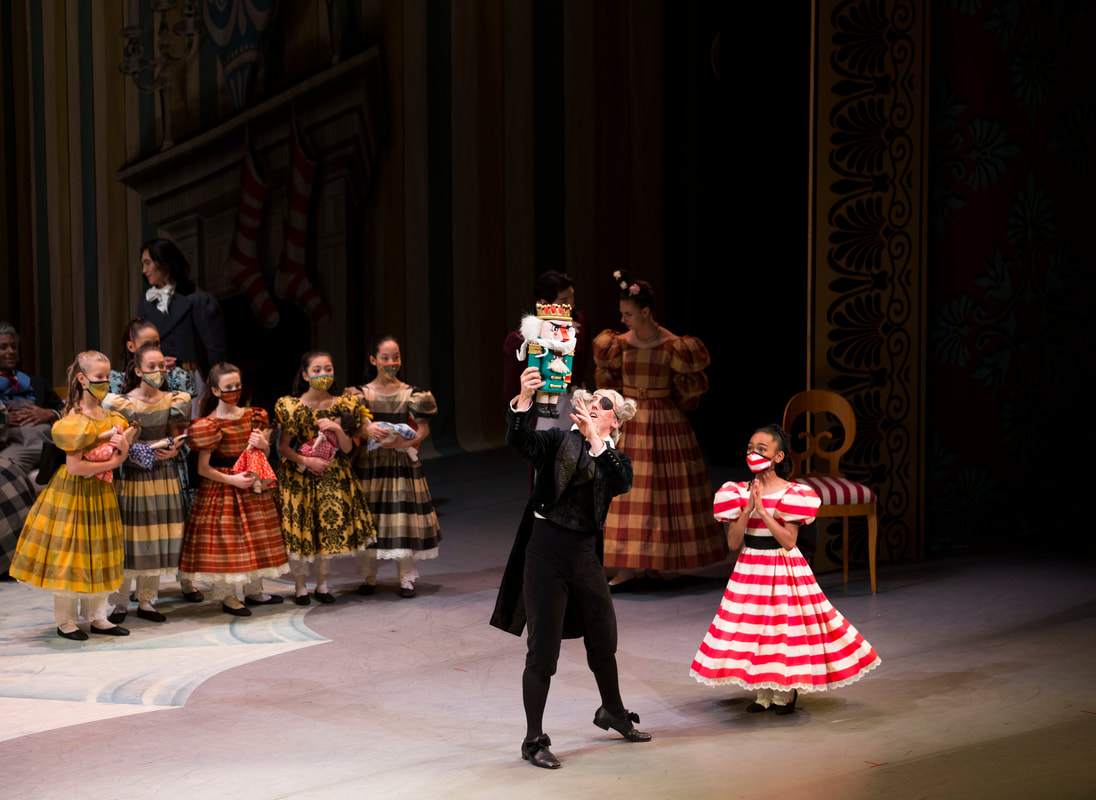 Pacific Northwest Ballet soloist Ezra Thomson as Drosselmeier, with DianaStarr Robinson as Clara in the party scene from George Balanchine’s The Nutcracker®, choreographed by George Balanchine © The George Balanchine Trust. PNB’s acclaimed production returns to McCaw Hall November 26 – December 28, 2021. Photo © Angela Sterling. Pacific Northwest Ballet's 2021 Nutcracker opener on Friday night was a welcome glimpse into beloved pre-pandemic traditions for local ballet fans. It was also a huge step away from the destructive traditions of racial and gender stereotyping that've plagued classical ballet since classical ballet was classical ballet. I am not writing about this to make a judgement call about whether PNB's measures go far enough to repair the damage done--every person has their own bar for this and every dance company has to make decisions that simultaneously uphold its progressive ethics and protect its economic survival. What I can tell you about is how much this performance rocked.
I love Nutcracker. The music and story are home to me, and oh boy I've seen a lot of Nutcrackers in my 44 years. What I've never seen is a Clara so full of love and joy in her role, so completely immersed in the magic of a growing Christmas tree that I was at times convinced she was actually surrounded by living peppermint people and adult-sized mice. 11 year old Pacific Northwest Ballet student DianaStarr Robinson was a radiant Clara on opening night, brava. The Waltz of the Snowflakes, titled A Forest in Winter in Balanchine's Nutcracker, was performed this year by a talented mix of PNB's corps de ballet and professional division students. It's typically not my favorite part, I'm usually hyped up from the battle scene and just want to see the Sugar Plum Fairy, but last night I was enamored by the rare ecstatic grace of this troupe of snowflakes. They all looked so happy and more...flitty? Light and airy ballerinas swooped through falling snow as Ian Falconer's stunning set of winter trees settled around the stage. Tchaikovsky's score, performed by a *live* PNB orchestra, felt more vibrant after a long pandemic absence. One flake, with graceful shoulders and a brilliant smile, was a dancer assigned to a male body at birth. One of a couple of gender-neutral PNB dancers, this artist performed on pointe as a snowflake and in Act II's marzipan variation in a tutu, in roles traditionally assigned to cisgender women. Male dancers have performed on pointe before, but usually in spoof performances such as the famed Les Ballets Trockadero des Monte Carlo. But as we saw on Friday night--and will see again throughout PNB's 2021-22 season--the strength, grace, fluidity, and regal qualities of these traditionally female roles are not qualities that only female-born bodies possess. The program notes from PNB artistic director Peter Boal marked a big change in a charged issue surrounding the unmistakable racist imagery in Act II's "cultural" tour of sweets and treats. The "Chinese" variation was (and still is) performed for decades by dance companies around the world in basic yellowface, caricaturing Chinese culture in all sorts of incorrect and highly offensive ways. PNB worked with the Balanchine Trust (the legal body granting permission to dance companies to perform Balanchine choreography) to rework the "Tea" variation into a less offensive tribute to Chinese culture. Represented by a grasshopper (a token of good luck in Chinese culture) instead of a Chinese man, the main dancer in this variation leaped around the stage and rubbed his limbs together. Every variation in the Land of the Sweets was originally connected to a specific culture, and we can discuss for hours whether changing the names and imagery in the dances erases or at least eases the racial stereotyping. But who wants to read a blog post for hours (or write one for that matter)? Back at the ballet: Pacific Northwest Ballet's 'Singularly Cerrudo' - live and in the flesh!9/26/2021 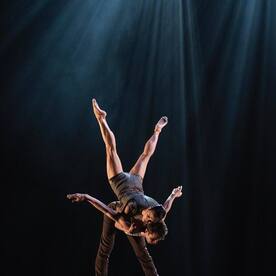 Noelanie Pantastico and Lucien Postlewaite in "Silent Ghost." Photo by Angela Sterling. Noelanie Pantastico and Lucien Postlewaite in "Silent Ghost." Photo by Angela Sterling. Returning to McCaw Hall last Friday night was not a return to the old days--it felt more meaningful than that. The pre-performance buzz of the audience was softer, due in part to limited seating capacity and maybe also to a general awe of the moments we lost during the long months since the pandemic irrevocably changed, well, everything. But the excitement and energy of an audience hungry for live performance was thick in the air. With mask-muffled shrieks of recognition, we greeted beloved artists and company administrators, ushers, fellow arts fans. And with this new sense of appreciation for the things we love the most, the opening performance of Pacific Northwest Ballet's 49th season didn't need to harken back to old times. On Friday night we were given a gift: a powerful new lens through which to gaze at our grief and our joy. Through the deeply emotional choreography of PNB resident choreographer Alejandro Cerrudo, PNB dancers performed three pieces that captured their greatest technical gifts and artistry, along with an immense love of art and people that every facet of the company has shown over the last year. PNB decision makers could have packed every seat in the house and boosted much-needed revenue. Instead, they limited ticket sales to ensure safe social distancing. Some ballets were staged with real-life couples performing pas de deux to limit physical contact between artists' households. None of the ballets that opened the season required a huge amount of dancers onstage. And everyone rehearsed in masks. But after so many long months away from the studio and stage, the dancers still have it. Some of them even got stronger. I had a hard time tearing my eyes away from corps member Leah Terada in "One Thousand Pieces," her leg strength and musicality so fined-tuned into the soul of the ballet that she seemed alone onstage at times. Soloist Elle Macy, forever one of my favorite dancers for her exquisite combo of grace and power--like a fairy who could fight off a whole army with one fierce gaze and a few pointed roundhouse kicks--danced through "One Thousand Pieces" as if there was not a single drop of rain onstage. Noelani Pantastico and Lucien Postlewaite's duet in "Silent Ghost" pushed Cerrudo's choreography to new limits; Pantastico balancing on Postlewaite's back until it seemed she would flip over his head onto the stage, but remaining still long enough to appear that she floated in midair. This balancing act and the grace with which Pantastico and Postlewaite perform captures that magical balance of movement and stillness that we've all struggled with personally and socially during the pandemic. It was a perfect way to open the season, with perfect dancers at the helm of the performance. Most of the music for the "Singularly Cerrudo" program was pre-recorded, including pieces from Philip Glass, Max Richter, Tom Waits and Kathleen Brennan, and the rock group Beirut. But that "singular" moment for me came at the very end of the performance, when I looked down into the orchestra pit and glimpsed PNB musician Alexander Grimes on his viola. As I watched him play, it sank in that I was in the same room as the beautiful music hitting my ears. I was back. We were all back in the theater, the place where we remember what we love, why we love it, and what we are fighting for. I had tickets this past spring to take my son to what would have been our first ballet together. Then the pandemic happened, the show was canceled, and 8 months later performance venues in America remain shuttered. But artists across the country are finding ways to make it work, and for two of our family favorites--Iowa singer/songwriter William Elliot Whitmore and Seattle's Pacific Northwest Ballet, this means performing in front of cameras instead of the stage. So on Saturday night, my husband and our kiddo brewed up a pot of hot chocolate, put on our comfy socks, and cuddled on the couch for a couple of stellar shows.
The Blues Will Whitmore premiered his new album, "I'm With You" from Bloodshot Records, to fans across the country via a livestream. Performing alone in the studio on his Iowa farm, Whitmore sang all nine tracks from the new album along with a few old favorites. "These songs aren't exactly road-tested," Whitmore laughed, "because I haven't been on the road!" Masterfully picking banjos and guitars and knocking a drum with his left leg while sipping whisky and operating the computer, Whitmore sang about the burdens of rural farm life, losing parents, and facing societal and environmental degradation. The melodies and lyrics to the songs on "I'm With You" feel ripped right from the hearts of creatives locked down under the months-long quarantine. In "Black Iowa Dirt," Whitmore sings "I've got that dirt underneath my fingernails/Got that dirt running through my veins." That dirt, that foundational ingredient to life and creativity, runs through the veins of all of us during this shit time. It won't go away. Learn more about Whitmore and the new album here. The Ballet Pacific Northwest Ballet's 2020-21 season, titled "Dance Happens Everywhere," opened online Thursday night October 15th with "Rep 1." The pieces were filmed in an almost empty McCaw Hall. Dancers rehearsed for weeks in small pods. Everyone involved in rehearsals and production wore masks. PNB produced "Rep 1" with as much reverence for health and safety as they exhibit for the art of ballet. That is love. That is leadership. "Rep 1" opens with Lucien Postlewaite in Jerome Robbins' jaunty, welcoming "Opening Solo" from "Dances at a Gathering." Postlewaite uses music as an invisible body part, delicately lifting and dropping the notes as he jumps around the stage. The occasional footfall at the end of a high jump can be heard just enough to make it feel (kinda) like we're sitting in the theater. Excerpts from Eva Stone's 2019 audience favorite "F O I L" follows Postlewaite's solo, including the powerful trio of women performing with their backs to the audience. In choreographer Albert Evans' "One Body," Chris D'Ariano resurrects a solo originally performed in 2003 by PNB artistic director Peter Boal, back in his New York City dancing days. Set to the haunting vocals from composer John Kennedy, "One Body" feels liturgical and deeply sad, as if we've snuck up on a monk performing a moving meditation. The rep continues with three sections from Kent Stowell's Swan Lake, during which Stephen Loch's airy tour jetes in the Black Swan Pas de Deux caused my preschooler to scream into my ear, "Did you see that, Mom? That is the BEST!" And it was. Also fabulous was the ever-badass Angelica Generosa in her debut as the Black Swan. The rep followed with three section from Balanchine's "Jewels" and a reprise of choreographer Jessica Lang's "The Calling." But if we have to pick one specific piece of dance to title this strange, life-changing year, it is James Moore's performance in Marco Goecke's "Mopey." Just as we commonly assign songs to important life events like breakups or weddings, sometimes there is a particular ballet that expresses our feelings when words cannot. Goecke's choreography and Moore's emotionally mature and physically stunning performance paint the erratic feelings of a slow dissent into madness, made more perfect by a split score by Bach and the Cramps. "Mopey" alone is worth the price of admission. Excerpts from choreographer Robyn Mineko Williams' "The Trees The Trees," and Ulysees Dove's "Red Angels" complete this first rep of the PNB 2020-2021 season. Accessible via season or one-off tickets, all performances are available to watch for a limited number of days. More information about tickets on the PNB website here. We gotta start small. When our kids are small. The conversations can be "brief, simple, and honest as we can be" with these tiny brains, but we need to tell our children what's going on inside and outside their tiny communities. Especially our white children. They will ask us why we let it happen and we will not have a good answer for them. But we can give them (and us) tools that they can build with. Here are some places to start: Anti-racism resources for White People - Google doc compiled by Alyssa Klein. Instructional materials, lists of books, videos, podcasts. Beyond The Golden Rule - A Parents Guide to Preventing and Responding to Prejudice - Teaching Tolerance. Free PDF of an instructional handbook for educators, organized into age groups for quick reference. The best guide for talking to preschoolers about racism. Highlights: For preschoolers, be honest about the state of racism in current affairs; answer their questions; talk about inclusion from an early age and *act accordingly*. How to Teach Your Kids to Fight Hate: An Age-by-Age Guide - Parents Magazine. Geared more toward anti-Semitism and a bit light, but a good place to get an idea of what kids can handle developmentally as you decide how much to tell them about current affairs. Highlights: Start when they are young, teach kids to name racial violence and hatred, and teach them coping skills so they can discuss racism instead of getting stuck in discomfort and fear. Supporting Kids of Color in the Wake of Racialized Violence - Embrace Race. A soundcloud discussion on supporting children in your community immediately after a violent episode. Highlights: Know what questions children are asking, correct misinformation, and provide a safe space for children to talk about fear and anger. How to Talk to Kids About Race - ParentMap. Seattle author Imani Razat presents 8 ways to integrate race discussion into everyday life. Highlights: Kids pick up our signals and cues and will emulate our actions, attitudes, and biases. Learn how to be a better role model. Take diversity training. Your Kids Aren't Too Young to Talk About Race: Resource Roundup - Pretty Good Design. A treasure trove of resources for kids and adults, including books, podcasts, and articles. Resources for Talking About Race, Racism, and Racialized Violence With Kids - Center for Racial Justice in Education.  Gus Gus in Disney's 1950 film Cinderella Gus Gus in Disney's 1950 film Cinderella I loved the Disney Cinderella movie as a child. Still do. That poignant duality of evil and silly so prevalent in the old Disney films is tuned to a fine art in the 1950 classic. Cinderella's deep grief is hammered out in eerily realistic cartoon facial expressions, her mice sidekicks' vaudevillian antics moving Cinderella through her daily routine of physical and emotional abuse. As a kid it was mere entertainment but in adulthood we recognize the parallels between Cinderella's struggles and those of so many of our neighbors. In this world of blatant social inequality, the most talented and humble are often overlooked. And only in stories do we get a Fairy Godmother to save the day. Sometimes I like to get lost in a fairy tale like this, just for a couple of hours, so I can regroup my inner Gus Gus and keep fighting the good fight. Two and half hours of Prokofiev and countless glittery tiaras later (even my favorite communications director wore one), I was revived. Kent Stowell's Cinderella, premiered by Pacific Northwest Ballet in 1994 and performed again this season, is the ballet lover's ballet. It is long, it sparkles, and it shows off the very best classical ballet technique has to offer. Stowell's version takes full advantage of Prokofiev's big waltzes: well-synchronized groups of corps de ballet members in bright costumes sweep in large circles around the stage, so happy and grand the ballroom essence fills the theater. It is a celebration of dance as much as it is a telling of the classic story. Laura Tisserand's Fairy Godmother/Memory Mother was strong and delicate, her dainty fairy qualities interspersed with astounding leg extensions. Tisserand will always be one of my favorites and not just for her passionate dancing: a mother to a young child and a business owner as well as a principal dancer, Tisserand's strength and grace on and off the stage astound me (I can gush, this is my very own blog). Ben Griffiths' performance as the Jester made me realize that there's a lot more whooping and hollering at ballet performances these days, and thank ye gods! Griffiths' Jester showcases his very best: incredibly high jumps, quick, perfectly-landed turns with multiple revolutions, and an unrivaled humor and artistic expression. Sarah-Gabrielle Ryan and Price Suddarth as Columbine and Harlequin received an equal number of well-deserved whoops--their onstage chemistry and presence energized a packed McCaw Hall. And last but definitely not least is principal dancer Noelani Pantastico's Cinderella: perfectly gentle and kind but with a fervor for love and adventure that transforms her into the most convincing hero. To the very point of her curved foot, every aspect of Pantastico's dancing is finely tuned. With Seth Orza as an appropriately strong and charming Prince, Pantastico's Cinderella made it possible to disappear, just for a while, into a world where the ending is always happy and just. 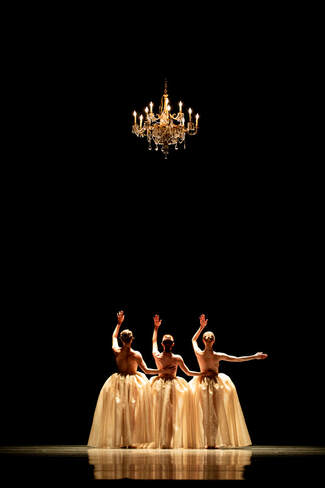 Pacific Northwest Ballet company dancers Cecilia Iliesiu, Margaret Mullin, and Emma Love Suddarth in Eva Stone’s F O I L which PNB is premiering as part of LOCALLY SOURCED, with additional new works by Donald Byrd and Miles Pertl, November 8 – 17, 2019. Photo © Angela Sterling. Pacific Northwest Ballet company dancers Cecilia Iliesiu, Margaret Mullin, and Emma Love Suddarth in Eva Stone’s F O I L which PNB is premiering as part of LOCALLY SOURCED, with additional new works by Donald Byrd and Miles Pertl, November 8 – 17, 2019. Photo © Angela Sterling. Choreographer Eva Stone's new work, "F O I L," is a love letter to women in the arts. One of three new works by local artists commissioned by Pacific Northwest Ballet for its "Locally Sourced" program, Stone's new contemporary ballet features eleven company members, mostly women, in a series of five dances with intensely disparate moods and energies. The intensity is pleasant, a journey in feelings and sparkles and pastel colors. "F O I L" is all pretty. The music, mostly piano and airy strings, is a collection of pieces by important but lesser-known female classical composers. Lit by local lighting designer Amiya Brown, the immediate mood of "F O I L" is set by an array of sparkly ballroom chandeliers that lower and rise with each section of the ballet. A dancer announces the title of each section to the audience: "Now," "Be Still," "Hold," "Wait," and "Exhale." The titles are more than mere suggestions, and along with these prompts "F O I L" uses movement, music, light, and the power of the female body to create very specific moods. The second--and best--section of the ballet, "Be Still," features Cecilia Iliesiu, Margaret Mullin, and Emma Love Suddarth in slow, darkly-lit movements performed entirely with their back to the audience. Costumed in wide hoop skirted tutus the dancers look topless from the audience. The section is sensual but not sexual, commanding but gentle. The dancers' rippling back muscles cast tiny shadows as they move their arms up and down conjuring a spell that leaves the whole of McCaw Hall in complete silence. The second piece in the program, "Love and Loss," from local (but nationally renowned) choreographer Donald Byrd is a fun twist to Byrd's recent style. Local audiences are used to Byrd's creations for Seattle's Spectrum Dance Theater, where he bases full-length contemporary ballets on themes of social justice. The complexity of Byrd's subject matter sometimes requires so much attention that the dancing is hard to focus on. In "Love and Loss," Byrd retains his signature communication of the complexities of the human condition but weaves it together with classical ballet steps and the individual artistries of PNB dancers. Byrd may be giving the audience another social commentary but this time he makes us figure it out on our own. Composer Emmanuel Witzthm's music for "Love and Loss" is a long, dramatic, classical score punctuated by subtle, sometimes creepy, electronic pulses and beats. The large cast of "Love and Loss" feels heavy on the men, but this could be due to the distinct emotional energy devoted to the men's choreography. Each pas de deux involves a painful separation of the man from the woman, the most dramatic and beautiful in dancer Amanda Morgan's backwards bourrees as she tears herself away from partner Ryan Cardea. Costumed in close fitting pants and partially buttoned dress shirts, the male dancers are the epitome of strength and capability but exude such isolation and melancholy that I wonder if Byrd is alluding to that male vulnerability so rarely discussed in the arts. In classical ballet, men are the stalwart supporters of their female partners, performing impressive leaps and turns when alone onstage. Whatever his thesis in "Love and Loss"--if there is one--Byrd commands the emotions of his audience by bringing out the very best artistic and physical qualities in PNB dancers. The growing strength and artistry of corps de ballet dancer Cecelia Iliesiu and Madison Rayn Abeo are particularly special in this piece. And then there's "Wash of Gray," the new work from company dancer Miles Pertl. Another love letter, "Wash of Gray" pays tribute to Seattleites and the stuff we love the most. It's sweet and lovely to watch but the narrative to "Wash of Gray" is so literal it frequently washes out the dancing. Each piece of "Wash of Gray" is its own entity: the constantly-changing backdrop art, the costumes made to reflect Seattle weather and landscape--it's all important but gets lost in the jumble. The choreography has its bright moments. Principal dancer Liz Murphy's physical abilities and artistic grasp on ballet technique is more badass with each season. Her lines and arching back are tiny works of art in themselves. Her partner, new corps member Luther DeMeyer, dances with a lyricism and grace not usually seen in younger dancers. And the crowning moment in "Wash of Gray," dancer Sarah Pasch's short but gorgeous solo in her 28th week of pregnancy, narrated perhaps the most memorable theme in "Locally Sourced." Everything that is here, here now, has its own unique beauty that makes this place what it is: strong, wise, and moving forward with the times. Autumn Knight just drama therapied the shit out us. Her one-woman show, "M___ER," is less of a theatrical production and more a deliciously intimate investigation into two things that terrify people the very most: audience participation, and forgetting our mothers' birthdays. And perhaps beyond that, Knight's show (at least tonight) was an fearless incursion into what happens to a group of mostly white theater-goers when a powerful black woman breaks the fourth wall and inhibits the passive consuming of art.
Knight opens her show by wandering through through a pitch-black theater while making a series of common human sounds: breathing, crying, sniffing, bellowing, yelling in ecstasy, whispering. Knight's sound collaborator Rena Anakwe weaves the sounds through a pattern of soft clicks, raising and lowering the volume so that it feels as though Knight is moving through the crowds like a ghost, unidentifiable until the lights slowing raise to reveal her sitting on a weird wooden throne, moving around objects that were unidentifiable to me by sight or sound. At the beginning I couldn't see shit, as I was seated at the back of one of six clumps of chairs thrown so weirdly together that people had to climb into some of them. Between the groups of spectators were piles of brown butcher paper up to five feet high and hanging from heavy rolls suspended from the ceiling. Backlit by soft pastel colored lights, the paper piles resembled rough mounds of toys and random stuff that might be laying around a house, heavily present but unidentifiable and unimportant. Knight spoke to the audience as if she were our collective mother, sometimes speaking to us a group and sometime individually, so easily making up names as she addressed her "children" that it felt as if she had studied our faces for longer than a few seconds. Some people responded to Knight's questions--"Why did you forget my birthday?" "What did it feel like when I died?" with no effort, some offered way more material than seemed necessary, and some didn't answer at all. In this role as mother, Knight dug into the audience's psyche with every question and as people's individual body language reflected their discomfort, Knight would address them: "Perk up!" "Perk down!" and look them square in the eye. I have a cold, and she turned to me directly to ask if I needed a tissue and told me that I looked cute even when I was sneezing. People looked at me when she said this. I was uncomfortable. I don't know why. Knight's background in psychology and multi-disciplinary performance gives her the tools to take her highly gifted intuition and insight into humans to levels that might scare the shit out of some people. Continuing with the birthday theme of the rough storyline, Knight walked through the crowd of audience/children offering spoonfuls of dairy and nut free artisanal ice cream from clean, individual utensils. And some people refused, even looked repelled at the suggestion of being fed a bite of ice cream. Volumes could be written about the reasons for these refusals but the one visible emotion I could see was fear. What the shit? Knight's presence is gentle, feminine, nurturing, loving, and true, but that makes her art impossible to hide from (as do the bright lights shining down on the faces refuses spoonfuls of ice cream). We are used to watching art, loving or judging it from the dark anonymity of our theater seats and then going home. Knight does not let us do this--maybe because it was never really our right to view art this way in the first place. "M___ER" closes after tomorrow's 5pm performance. That one might be vastly different than the one I saw tonight, but the gravity of Knight's message about art consumption and bodies and black bodies and the inescapable hold of motherhood over society will not change, nor will it ever not be relevant. Go see it. And eat the fucking ice cream. Tickets: https://www.ontheboards.org/performances/m-er 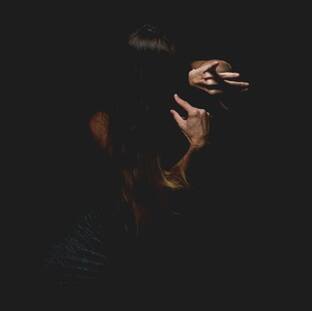 photo credit Michelle Smith Lewis photo credit Michelle Smith Lewis Alia Swersky holds my arms over my head by the wrists, whispers something softly into my ear and then lets go. It is the middle of Swersky’s new solo performance piece, "When your arms ached, I watched the Mountain hold its fragile form," and I, who usually balk at audience participation, am in the middle of the stage. When Alia approached me during a rehearsal viewing and whispered, “I’d like you to join me in the space, you can say no, it’s ok,” I followed her without a second thought. Alia led me around the performance space and prompted my body’s movements, holding my arms up and letting them fall, gently guiding my steps while I kept my eyes closed and walked by her side. When she picked up my arms I kept my muscles mostly limp, trusting her to let them fall only when they were safe from hitting anything that might hurt me. I felt completely comfortable, more powerful and at home in my own body than I remember since giving birth to my son. Alia Swersky’s artistic and physical power is contagious. The culmination of two years of creative and physical preparation, "When your arms ached, I watched the Mountain hold its fragile form"is a combination of durational performance, dance, art installation and dance improvisation that communicates the parallel traumas experienced by female-identifying bodies and mountains. The show requires an incredible amount of energy to perform. In the first two hours Alia rolls around on the floor of the performance space at Base Experimental Arts in Georgetown in a “silent durational ritual,” designed to demonstrate the passage of time and to engage the audience in silent reflection. “For me,” says Swersky in a phone conversation, “the passages of tribes and women and migration through the mountains is right there with the image of the female body rolling around.” Alia incorporates a huge swath of pink fabric into her movements, her hair and the fabric blowing slightly around from wind produced by small fans on the corners of the room. “It’s sensual and sexy with the pink fabric, a soundscape, an environment that I hope people will come into to feel as opposed to being expecting to be entertained. My hope is that people will feel comfortable coming in and laying down, writing, thinking--the ritual deepens the experience of the performance because it contextualizes it.” Accompanied by music and soundscape by Monika Khot, an enormous mural of a mountain by artist Mya Kerner, and lighting by Amiya Brown, Alia Swersky’s performance is an experience, something to think about rather than to just observe and go home--but there’s also a lot of room to enjoy art and the presence of other people. The performance section of “When your arms ached” is packed with symbolism, intense emotion, and beautiful dancing. Swersky’s background in classical dance, improvisation, yoga, meditation, motherhood, and life come together with choreography that is packed with technically brilliant and unique movements. At one point, Swersky faces the audience and points one long, perfectly arched foot at the ground while vibrating her upper body almost violently. The juxtaposition of visually stunning physicality combined with disturbing violent messages are synonymous with “the onslaught of violence of our culture and our environment and on woman and woman’s body,” says Swersky. “I’m not trying to be an environmental activist in this piece, but the metaphor of the fracking of mountains and rape are there.” Despite these heavy themes, "When your arms ached, I watched the Mountain hold its fragile form" isn’t a piece about sadness or panic in the face of cultural and environmental degradation. “While there were some things going on in my life while I made this piece, some of the actual physical movements like the shaking and holding my arms up demonstrate a rite of passage back into my purpose after abandoning my art in some ways.” Swersky wants her audience to experience this rite of passage as a way to connect to the idea that “we aren’t alone, that connections to one another are essential,” she says. This is why the section where she holds an audience member’s arms for them is so important. “I’m from Colorado and I’ve always had this sense that I had to be as strong as the mountain,” says Swersky. “We think that it’s strong and stable but the mountains are always changing and eroding, just like us. None of us can get through this alone. You can be belittled by it or you can take charge of it. Be as big as the mountain and look into the male gaze and be in charge.” "When your arms ached, I watched the Mountain hold its fragile form" runs May 17-19 at varied times. Schedule and tickets here, more about Alia here |
AuthorMother Archives
September 2022
Categories
All
|
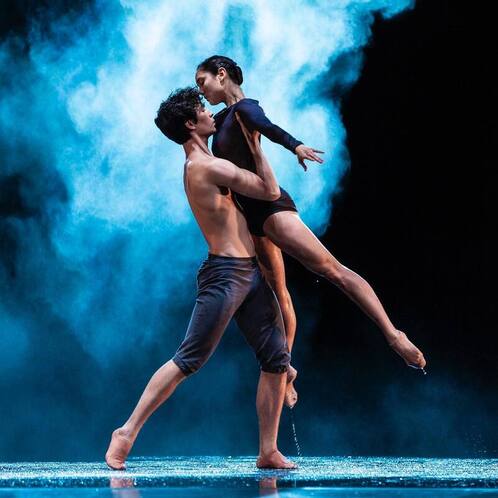
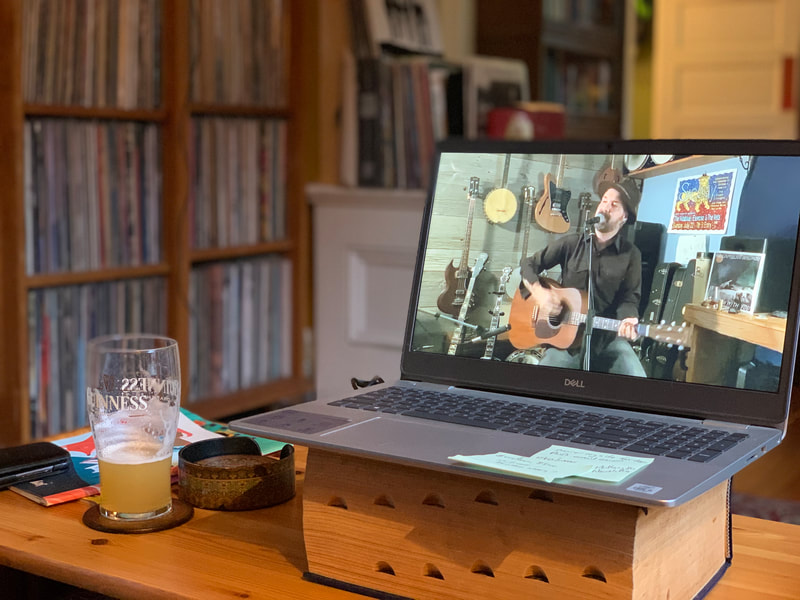
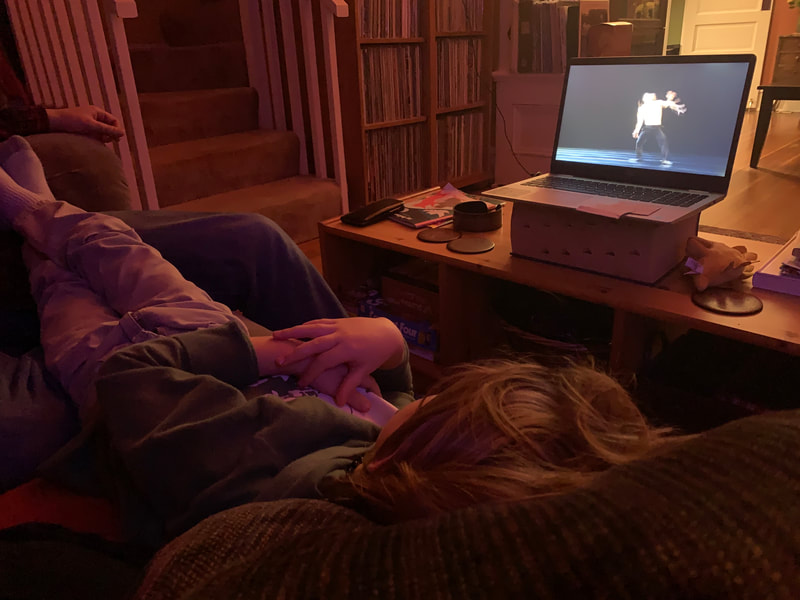
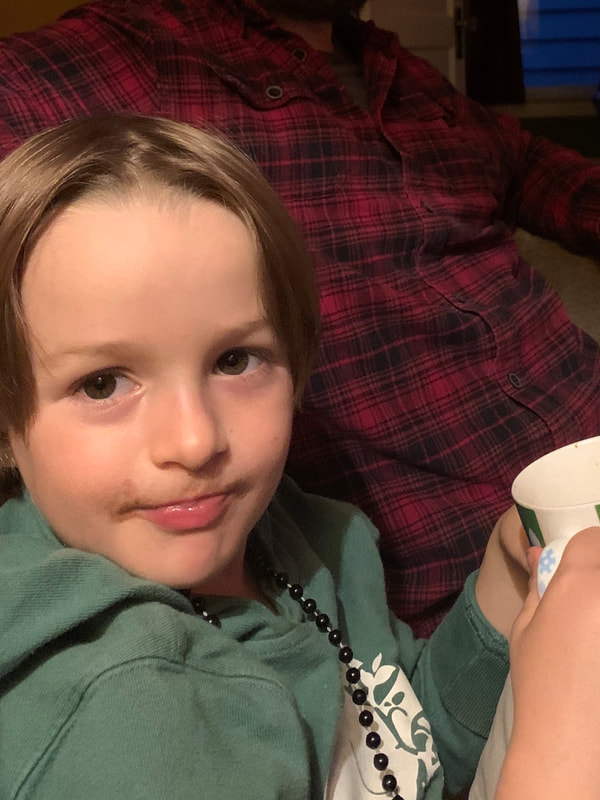
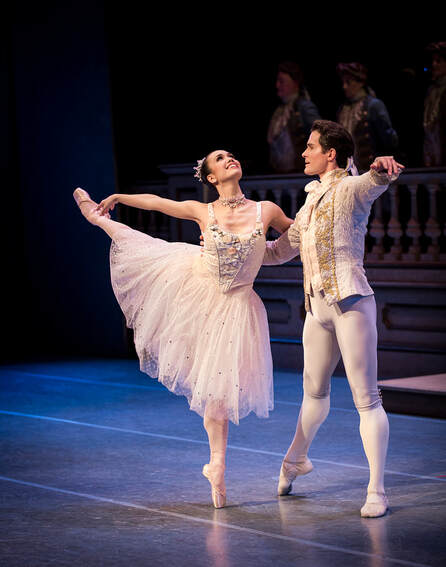
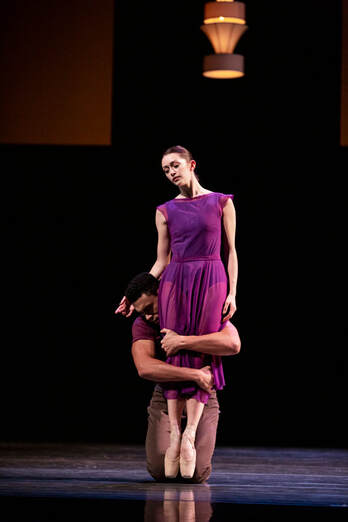
 RSS Feed
RSS Feed
